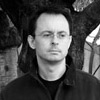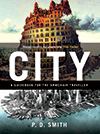30 August 2023 | Twitter |
I’m now also on Bluesky - @pdsmith.bsky.social. I haven't posted much yet (who has the time?!) but it’s quite fun over there, and feels a bit like early Twitter.
Threads still hasn’t got the momentum or functionality it needs to compete with the site formerly known as Twitter. Bluesky definitely feels more lively. But I’m also enjoying the image-rich feeds of Instagram.
In fact I’m beginning to think no single site will replace Twitter. You just have to find different voices on different platforms. A Twitter multiverse, perhaps…
24 July 2023 | Twitter |
If you want to connect other than via Twitter, I’m now @p.d.smith_ on Instagram and Threads - and I don’t mean the 1984 nuclear war drama.
I’ve been on Twitter since 2008 when I jumped ship from MySpace (remember that?!) and although it can be a massive distraction, I’ve met some great people through it and I still find my lists useful to find out what's going on.
For these reasons I’m not giving up on Twitter quite yet, but my timeline is becoming increasingly noisy and the signal is growing ever more faint.
I’m also annoyed by the plan to put Tweetdeck behind a paywall in August. It seems to me that Musk’s Twitter is on a road to nowhere. Indeed, soon it won’t even be called Twitter! Crazy.
So although I’m still on Twitter, I’m also trying out Instagram and Threads. It’s clearly not perfect and up till now I’ve tried to avoid the Zuckerberg empire. To be honest there doesn’t seem to be much happening on Threads, for now at least, but here goes! You’re welcome to join me…
04 July 2023 | Detectives, Guardian, Reviewing, TLS |
As well as my monthly paperback reviews for Guardian Books, I’ve written a review for the TLS of Daniela Krien’s new novel, about a couple rediscovering their love for each other, and a brief piece about the wonderful Martin Beck series of detective novels for the Guardian.
Enjoy!
26 May 2022 | crime fiction, Detectives, Watching the Detectives |
The Guardian asked me to contribute to a monthly piece on what books writers and readers have read recently. Unsurprisingly, it reflects my favourite subject of the last few years - crime and detective fiction.
By the way, the book I've been writing on this subject has been much delayed by, well, life. But the investigations are continuing and I'm working on the final chapter!
This is the link to the Guardian column - What We're Reading.
02 April 2020 | Einstein, Reviewing, TLS |
I've reviewed five recent books on Albert Einstein for the Times Literary Supplement this week.

These are the books: Michael D. Gordin, Einstein in Bohemia; Andrew Robinson, Einstein on the Run: How Britain saved the world’s greatest scientist; Allen Esterson, David C. Cassidy and Ruth Lewin Sime, Einstein’s Wife: The real story of Mileva Einstein-Marić; Matthew Stanley, Einstein’s War: How relativity conquered nationalism and shook the world; Daniel Kennefick, No Shadow of a Doubt: The 1919 eclipse that confirmed Einstein’s theory of relativity.
I've written about Einstein's life myself, albeit briefly, but it's fascinating seeing how much interest there still is in Einstein - the man and the science - after so many years.
You can read the review on the TLS site. But here's a paragraph from my piece as a taster:
Before Einstein departed for America on October 7, he said “no matter how long I live I shall never forget the kindness which I have received from the people of England”. Once ensconced in the Institute of Advanced Study at Princeton, Einstein never returned to Britain. Most of his closest friends in America remained Europeans though. V. S. Pritchett visited him there: “The atmosphere of Princeton is exemplary and decorous: Einstein’s laughter blew all that away”. It was, he said “a laugh that had two thousand years of Europe in it”.


